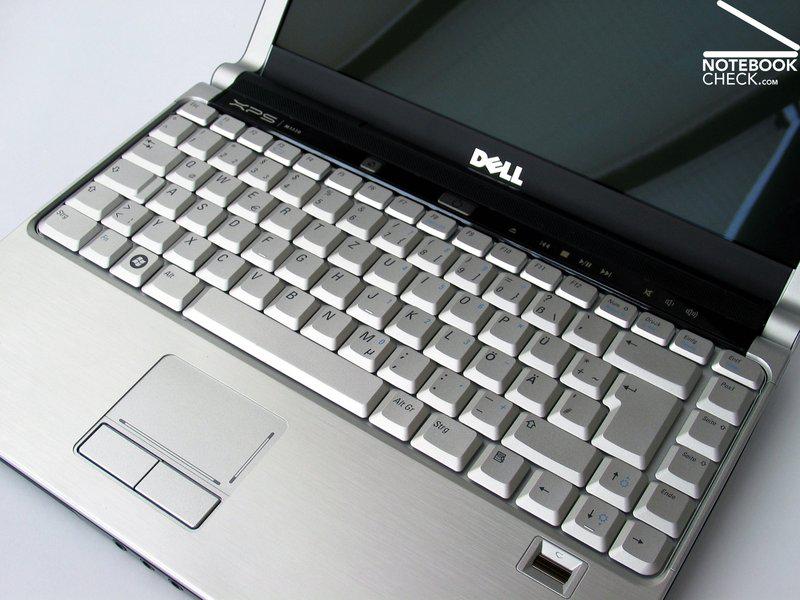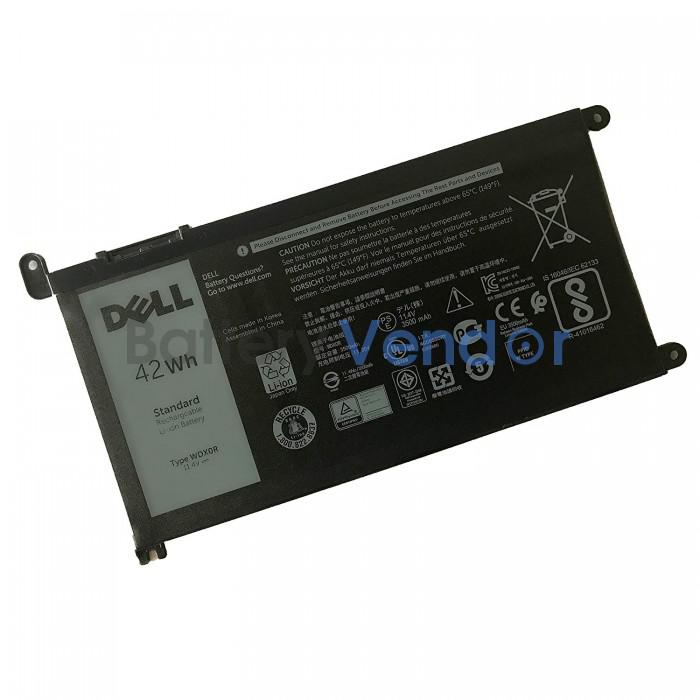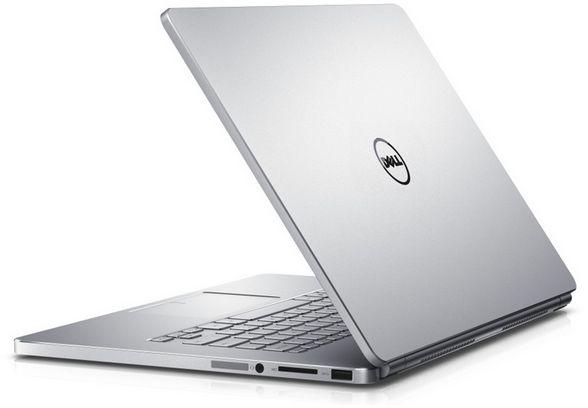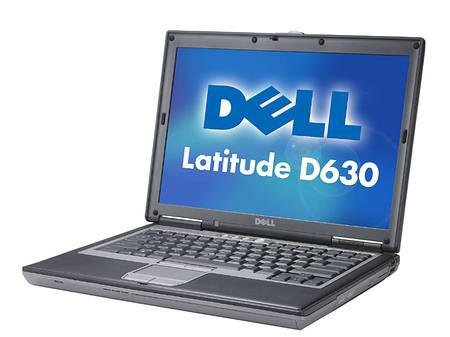by Andrew Baxter and Jerry Jackson
Overview and Introduction
the
Dell XPS M1330
is designed for those who want power on the go. If you're also fashion conscious and like to stand out from the crowd, the looks are the
XPS M1330
will also help you in this area. Slim design paired with a portable form factor and high-performance components combine to form a convincing notebook.
Build and design
Our pre-production XPS M1330 with the equipment:
13.3-inch WXGA LED-backlit screen
"Crimson" red paintwork (also available in "Tuxedo" black or "Pearl" white)
2.0 GHz Core 2 Duo T7300 processor, Santa Rosa chipset (up to 2.4 GHz available)
2GB DDR2-667 SDRAM (up to 4GB DDR2 SDRAM available)
160GB SATA 5400rpm Hard Drive (32GB SSD drive available)
Slot-loading dual-layer DVD-RW drive
128MB NVIDIA GeForce Go 8400M GS
WWAN option for Verizon
Ethernet, 802.11a/g/n (Intel 4965), Bluetooth option
Integrated VGA webcam
HDMI, VGA, 1394, two USB 2.0 ports, integrated media reader (MS, SD, xD), fingerprint reader
Media Center remote control in ExpressCard slot
Windows Vista Home Premium
Dimensions 12.5" x 9.4" x 0.87" – 1.33"
Weight starts at 4 pounds with 6-cell battery
(
see big picture
)
The design of the XPS M1330 really sets it apart. The design is, in a word, eye-catching. The slanted optics and the stunning lid, available in three different colors, immediately catch the eye. The slope resembles a rapid auto-tear Drop-look. And while the XPS M1330 isn't designed for going fast in the physical sense, it looks like it could if you just put wheels on it.
Once open, the M1330 offers more eye candy in terms of design.The buttons along the top edge are touch sensitive and light up softly when pressed.They look very stylish.The LED buttons are bright blue and are also visually appealing.The silver colored keyboard and the brushed aluminum casing inside provides a slightly industrial look that suggests that this device has some brawn.
(
see big picture
)
The M1330's hinge is quite unique, it's very rounded in appearance and pivots to bring the screen with the keyboard for a slightly lower overall profile. The LED-backlit screen is super thin, which keeps the weight down and back to the looks At the top of the screen sits an integrated web camera that's well hidden but noticeable.
Overall it has to be said that the M1330 is one of the best looking notebooks on the market today.
Screen
When configuring the XPS M1330, you have two options for the screen - a 13.3-inch LED backlit display that's thin and light, or a regular cathode-backlit display that's a bit thicker and not as bright and even is illuminated like the LED backlight display. We were lucky enough to have the LED-backlit display, and while it costs $150 more than the standard display, it's a worthwhile upgrade. The picture and brightness you get is just amazing! It offers 330 nits of brightness and is simply beautiful to look at. It's glossy by nature, so you'll get some reflection, but the rich and vibrant colors that come with this type of screen finish are worth it.
(
see big picture
)
The only downside to the LED-backlit display is the fact that you can only get a VGA webcam. If you get the regular WXGA display, you can configure a 2MP web camera. We think the VGA resolution is fine for things like Video chat applications is sufficient, but if you really feel the need for a higher resolution web camera and also want to save some money then go for the regular WXGA screen option.
speaker
(
see big picture
)
The M1330's speakers are located at the top of the keyboard area. Not much to write about the speakers, while they get loud enough, the sound is a bit tinny like almost all laptop speakers. The volume controls are touch sensitive buttons on the top right of the keyboard It's a bit difficult to use these buttons if you have big fingers, and there's no on-screen feedback to tell you you actually pressed the button. Overall, the volume controls are hard to use, although they look nice , an old-fashioned volume control is easier to use.
(
see big picture
)
If you prefer using headphones to the built-in ones, you're all set. There are two headphone jacks for capturing audio, both located on the front of the notebook. If you're trying to connect external speakers, it's not that convenient, but since it's around If you are traveling with a notebook, this is probably not a problem.
keyboard and touchpad
The XPS M1330's keyboard is quite similar to that of the older XPS M1210, although it feels wider with larger keys, so the keyboard is better overall. One thing that's definitely better about the M1330 is that the keyboard is firmer M1210 there was some indentation on the right side of the keyboard, but on the M1330 it's firm and solid all around. The XPS M1330 is really fun to type on. The only complaint I have for the keyboard is that your fingernails when They are a little long and could get caught under the buttons, but this shouldn't be a problem for most men.
(
see big picture
)
It's worth mentioning that with the 9-cell battery you get more tilt towards the keyboard overall, we actually like this for ergonomic reasons, it feels more comfortable when typing.
(
see big picture
)
The touchpad works well enough, although it's on the small side. The Apple MacBook is a 13.3-inch screen notebook, and the touchpad is probably twice the size of the M1330. The mouse buttons are decent, although Andrew would prefer they had a bit more travel. The good news with the touchpad is that it's responsive, has dedicated scrolling areas, and the textured feel is good.
Performance and benchmarks
Thanks to the Intel Santa Rosa processor platform and Nvidia GeForce Go 8400M GS graphics card with 128MB of dedicated graphics memory, the M1330 is a remarkably capable performer in its price range. While it's in the $1,500-$2,000 price range with 256MB of dedicated memory, it offers more powerful gaming systems on the market, the M1330 offers more than enough performance for casual gaming...even with some of the newest games.
However, due to some Vista driver issues, we had some trouble getting 3DMark05 and 3DMark06 running smoothly on the pre-production M1330 right out of the box. After spending a few hours running Windows Update and checking for drivers online, Jerry was able to run both 3DMark05 and 3DMark06 run constantly and was able to improve some of the benchmark values from our first test report.
Hopefully any driver issues will be resolved when Dell ships actual production units of the M1330 to customers. However, the driver issue we experienced shouldn't put anyone off this truly impressive system.
Super Pi Comparison Results:
Notebook
time
Dell XPS M1330 (2.0GHz Intel Core 2 Duo T7300)
0m 58s
Lenovo ThinkPad X61 (2.0GHz Intel Core 2 Duo T7300)
1m 01s
Lenovo 3000 V200 (2.0GHz Intel Core 2 Duo T7300)
0m 59s
HP dv2500t (1.80GHz Intel 7100)
1m 09s
Lenovo ThinkPad T61 (2.00GHz Core 2 Duo Intel T7300)
0m 59s
Lenovo ThinkPad T60 (2.00GHz Core 2 Duo T7200)
1m 03s
Toshiba Satellite P205-S6287 (1.73GHz Core 2 Duo Intel T5300)
1m 24s
Toshiba Satellite A205 (1.66GHz Core 2 Duo)
1m 34s
HP Compaq 6515b (1.6GHz AMD Turion 64 X2 TL-52)
2m 05s
HP dv6000t (2.16GHz Intel T2400)
0m 59s
Dell Inspiron e1705 (2.0GHz Core 2 Duo)
1m 02s
PCMark05 Comparison Results:
Notebook
PCMark05 result
Dell XPS M1330 (2.0GHz Intel Core 2 Duo T7300, NVIDIA GeForce Go 8400M GS)
4,591 PCMarks
Lenovo ThinkPad X61 (2.0GHz Intel Core 2 Duo T7300, Intel X3100)
4,153 PCMarks
Lenovo 3000 V200 (2.0GHz Intel Core 2 Duo T7300, Intel X3100)
3,987 PCMark
Lenovo T60 Widescreen (2.0GHz Intel T7200, ATI X1400 128MB)
4,189 PCMarks
HP dv6000t (2.16GHz Intel T7400, NVIDA GeForce Go 7400)
4,234 PCMarks
Fujitsu N6410 (1.66 GHz Core Duo, ATI X1400)
3,487 PCMarks
Alienware M7700 (AMD Athlon FX-60, Nvidia Go 7800GTX)
5,597 PCMarks
Sony Vaio SZ-110B in speed mode (with Nvidia GeForce Go 7400)
3,637 PCMarks
Asus V6J (1.86GHz Core Duo T2400, Nvidia Go 7400)
3,646 PCMarks
3DMark05 comparison results:
Notebook

3D Mark 05 results
Dell XPS M1330 (2.0GHz Intel Core 2 Duo T7300, NVIDIA GeForce Go 8400M GS 128MB)
3,116 3D marks
HP Compaq 6510b (2.20GHz Intel Core 2 Duo T7500, Intel X3100)
916 3D marks
HP Compaq 6515b (1.6 GHz AMD Turion 64 X2 TL-52, ATI x1270)
871 3D marks
HP dv6000t (2.16GHz Intel T7400, NVIDA GeForce Go 7400)
2,013 3D marks
Dell Inspiron e1705 (2.0GHz Core Duo, ATI X1400)
1,791 3D marks
Acer TravelMate 8204WLMi (2.0GHz Core Duo, ATI X1600 256MB)
4,236 3D marks
Alienware Aurora M-7700 (AMD Dual Core FX-60, ATI X1600 256MB)
7,078 3D marks
Lenovo ThinkPad T60 (2.0GHz Core Duo, ATI X1400 128MB)
2,092 3D marks
Asus V6Va (2.13GHz Pentium M, ATI x700 128MB)
2,530 3D marks
Fujitsu n6410 (1.66GHz Core Duo, ATI X1400 128MB)
2,273 3D marks
Dell XPS M1210 (2.16GHz Core Duo, nVidia Go 7400 256MB)
2,090 3D marks
3DMark06 comparison results:
Notebook
3DMark06 result
Dell XPS M1330 (2.0GHz Intel Core 2 Duo T7300, NVIDIA GeForce Go 8400M GS 128MB)
1,408 3D marks
Samsung Q70 (2.0GHz Core 2 Duo T7300 and nVidia 8400M G GPU)
1,069 3D marks
Asus F3sv-A1 (Core 2 Duo T7300 2.0GHz, Nvidia 8600M GS 256MB)
2,344 3D marks
Alienware Area 51 m5550 (2.33GHz Core 2 Duo, nVidia GeForce Go 7600 256MB .)
2,183 3D marks
Fujitsu Siemens Amilo Xi 1526 (1.66 Core Duo, nVidia 7600Go 256MB)
2,144 3D marks
Samsung X60plus (2.0GHz Core 2 Duo T7200, ATI X1700 256MB)
1,831 3DMarks
Asus A6J (1.83GHz Core Duo, ATI X1600 128MB)
1,819 3D marks
HP dv6000t (2.16GHz Intel T7400, NVIDA GeForce Go 7400)
827 3D marks
Sony Vaio SZ-110B in speed mode (with Nvidia GeForce Go 7400)
794 3D marks
Samsung R20 (1.73GHz T2250 and ATI 1250M Chipset/GPU)
476 3D marks
HDTune Results:
(
see big picture
)
heat and noise
The M1330's system fan and heatsinks do a great job of regulating heat when the system is under load... as we've noticed running multiple benchmarks in a row. The CPU temperature only reached 58 degrees Celsius during multiple 3DMark05 and 3DMark06 tests. The fan moved a significant amount of hot air, but the noise was relatively low and was imperceptible over background noise unless the room was perfectly quiet.
It's worth noting that we connected the 9-cell extended life battery to the M1330 during these benchmarks. The extended life battery lifts the system off the desk and allows air to circulate under the notebook chassis...helping to keep the system to cool. When we ran the same benchmarks with the standard 4-cell battery (with the case flush with the desk), the CPU temperatures peaked at 64 degrees Celsius.
The responsive brushed-aluminum palm rest surface did warm up during benchmarking, but temperatures remained at comfortable levels. The left palm rest was slightly warmer than the right. If you're particularly temperature sensitive, you may find the heat uncomfortable, but most do Users probably won't complain about it.
The hard drive in our pre-production unit was virtually silent, making no audible squeaks or scratches. The M1330's general lack of fan and hard drive noise should come as a welcome surprise to those with sensitive hearing...especially those who owned the M1210. In fact, that's the only thing noticeable unwanted noise emanating from the M1330 from the drive loading or ejecting a floppy disk.
Input and output ports
The M1330's port selection is remarkably good for a notebook of this size. Here's a quick rundown of what you get:
Two USB 2.0 ports (one left and one right)
IEEE 1394 / FireWire port
VGA monitor output connector
HDMI connection
Two headphone/line out ports
microphone afterwards
ExpressCard slot
Ethernet LAN port
SD/MMC/MS/MS Pro/xD Card Slot Reader
Biometric security/fingerprint reader
The top of the M1330 (left) in a sexy red aluminum finish. The M1210 is on the right.(
see big picture
)
The bottom of the M1330 showing expansion memory access, air vents and battery.(
see big picture
)
Compared to the M1210 (right), the front of the M1330 (left) has two headphone jacks, a microphone jack and a multi-card reader.(
see big picture
)
Compared to the M1210 (right), the M1330 (left) has an ExpressCard slot (Media Center Remote), wireless on/off, a slot-loading optical drive, a USB port, and a security lock slot on the right side .
(
see big picture
)
Again, compared to the M1210 (right), the left side of the M1330 has a power jack, VGA port, USB port, HDMI port, and Firewire port.
(
see big picture
)
On the back of the M1330 (left) nothing can be seen apart from the fan opening.(
see big picture
)
operating system and software
Dell was kind enough to install a minimal amount of bloatware on the pre-production M1330 model that we received. While most experienced users will likely spend the first 30 to 60 minutes uninstalling some bloatware from the system, many will become less technical Experienced owners will find the included applications very useful.
Of course, Microsoft Vista is a mixed bag for users as of this writing. There will continue to be minor issues with drivers, updates and application patches until Vista becomes a more seasoned and widely used operating system. However, those already familiar with Vista shouldn't have any problems with the M1330 and it should only take a few weeks for less experienced users to become fully familiar with the interface.
camera
As mentioned, the M1330 comes with either a VGA (LED-backlit) web camera or a 2-megapixel web camera with a standard display. Even with the lower-resolution VGA camera in our review unit, we can safely say that it does M1330 is a powerful performer for conference calls or online gaming. Brightness, color and contrast are almost perfect, and the face tracking feature allows you to keep your face front and center during video conferences. If you manage to get your face "somewhere" in Keeping it close to the front of the computer, the camera's face tracking feature will frame your mug nicely.
battery
The 9-cell battery is the right choice if you travel, which you probably will if you choose this notebook. With the screen brightness set to 3/8, Wi-Fi on, and idling with no work at all, the XPS M1330 Squeezed out 4 hours and 45 minutes of battery life. If you're watching a DVD on this notebook, you'll get just over 3 hours of battery life with the 9-cell battery. If you opt for the smaller 4-cell battery, you'll get runtime more than halved, but you have an overall lighter notebook. It's always a tough decision between a lighter battery that costs less and has less lifespan, or a larger battery that weighs more and costs more. You just have to decide which battery that best suits your needs. If money is no object, get both batteries and use the one that best suits the occasion!
diploma
With a design that is unmatched in its price range and excellent performance, the Dell XPS M1330 is sure to be one of the most popular notebooks of 2007
M1330 First Look Review
is already the most popular article on our forums based on views and replies.
While issues like warm palm rests, cumbersome media keys, a noisy slot-loading drive, and the somewhat heavy weight with the 9-cell battery will make some discerning buyers look elsewhere, most consumers looking for a 13.3 -inch notebook, it's hard to find a better notebook in the same price range.
Advantages:
Attractive design
Solid build quality
Excellent performance
The LED backlit display is amazing
Good built in camera... even the VGA unit
Nice keyboard
Attractive design (Yes, we said it twice.)
Disadvantages:
4.5 pounds with 9-cell battery
Gets a bit too warm, especially on the palm rests
Touch-sensitive media keys don't work very well
Slot loading drive is a bit noisy





